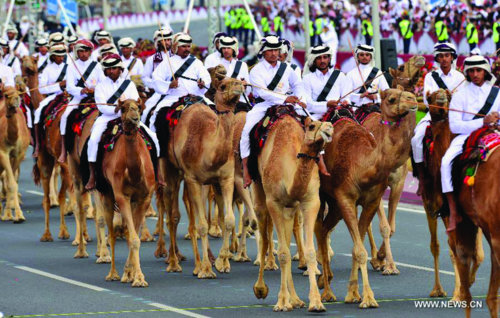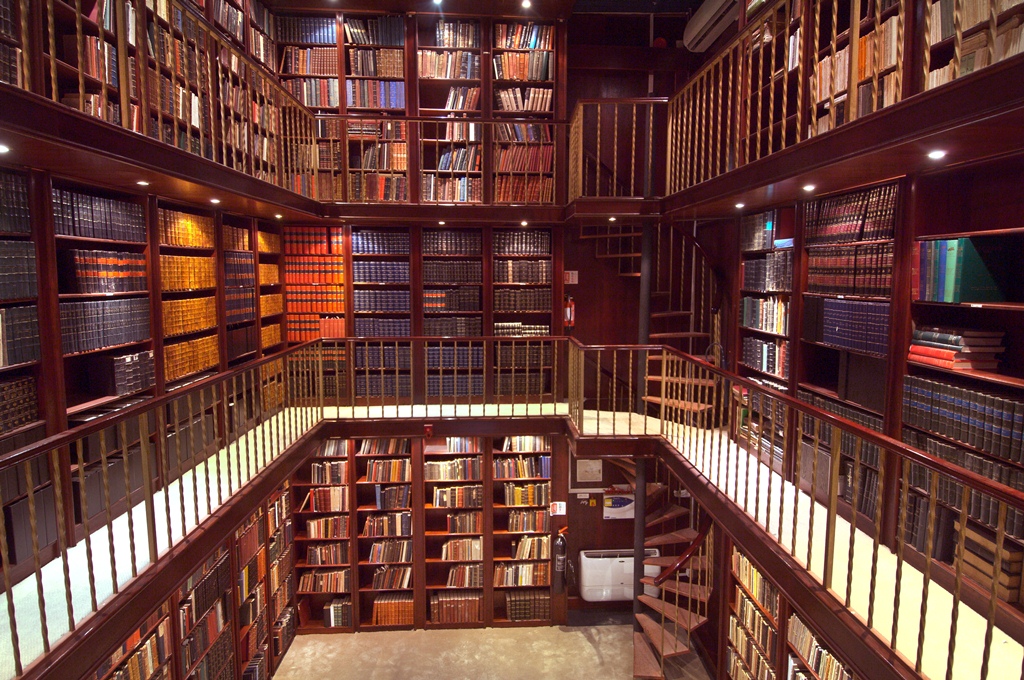 Celebrating the past, present and future
Celebrating the past, present and future
December 18 is Qatar’s National Day, a public holiday celebrating the country’s history, rich culture and heritage, its original unification as one state, and equally importantly its modern development. National Day is fun for the whole family, marked by parades, firework displays, light shows, traditional folkloric dancing, poetry sessions, cultural displays and other events throughout the country. The celebrations offer an opportunity to reflect on the country’s aspirations and achievements at both national and global level. For 2013 they are particularly special because, in a move previously unprecedented in the Arab world, a living ruler elected to pass the leadership to his son. The Father Emir, HH Sheikh Hamad bin Khalifa Al Thani, stepped aside in June, appointing his son HH Sheikh Tamim bin Hamad Al Thani to rule in his place.
 While treasuring the past, Qatar holds the future firmly in its grasp with a vision of national progress that will achieve a country with the proven capabilities to establish and maintain a leading role in the region and on the global stage. Archaeological exploration indicates that Qatar was populated as early as 4000 BCE, but National Day celebrates Sheikh Jassim bin Mohammed Al Thani’s unification of the whole peninsula as one state just 135 years ago. Sheikh Jassim became the country’s first national hero when he threw off the influence of the Ottoman Empire, and established a unified national state under his leadership. A new book on his achievements, ‘Jassim the Leader, Founder of Qatar’ was released in September. He had adopted a wise policy in dealing with the two major powers which were competing to dominate the Arabian Gulf and its territories at that time: the British Empire, which had started to extend its influence through the Government of India; and the Ottoman Empire, which was seeking to retain its control of the region following the end of the Portuguese influence in the 16th century. Because of his wisdom, Medhet Pasha assigned Sheikh Jassim the post of Governor of Qatar in 1876.
While treasuring the past, Qatar holds the future firmly in its grasp with a vision of national progress that will achieve a country with the proven capabilities to establish and maintain a leading role in the region and on the global stage. Archaeological exploration indicates that Qatar was populated as early as 4000 BCE, but National Day celebrates Sheikh Jassim bin Mohammed Al Thani’s unification of the whole peninsula as one state just 135 years ago. Sheikh Jassim became the country’s first national hero when he threw off the influence of the Ottoman Empire, and established a unified national state under his leadership. A new book on his achievements, ‘Jassim the Leader, Founder of Qatar’ was released in September. He had adopted a wise policy in dealing with the two major powers which were competing to dominate the Arabian Gulf and its territories at that time: the British Empire, which had started to extend its influence through the Government of India; and the Ottoman Empire, which was seeking to retain its control of the region following the end of the Portuguese influence in the 16th century. Because of his wisdom, Medhet Pasha assigned Sheikh Jassim the post of Governor of Qatar in 1876.
18 December 1878 marks the day Sheikh Jassim acceded to power and also the inception of the modern State of Qatar. Sheikh Jassim had stridently opposed Ottoman attempts to increase their influence on the peninsula, during which they appointed administrative personnel in Al Zubara, Doha,
Al Wakra and Khor Al Adaid, and established a customs office and reinforced their garrison in Al Bidda. As a result, a military confrontation followed and a crucial battle broke out between the Ottomans and the Qatari tribes, led by Sheikh Jassim. He and his troops fought bravely, inflicted defeat on the Ottoman troops and achieved victory. The Al Wajba battle, 15 km west of Doha, was a turning point in Qatar’s history.
As the 21st century unfolds, Qatar as a nation has made a very significant mark on the world stage. Its Qatar National Vision 2030 development strategy is comprehensive, bold and far‑reaching. However, while embracing the best of the 21st century, the nation is also determined to preserve and protect its culture.
Qatar at home and abroad
With visionary policies for its own development, Qatar has also emerged on the international stage as a competent and determined mediator, promoting world peace. For a nation relatively small in terms of both geography and population it has achieved incredible results in situations where larger nations and international organisations have faced failure. In terms of conflict mediation, conflict resolution and post‑conflict recovery, Qatar has played a significant negotiating role in countries such as Lebanon, Yemen, Sudan, Darfur and Libya. It has also exerted efforts to resolve the conflicts in Egypt and Syria.
Qatar invests heavily at home and overseas. In May, state‑owned Nebras Power was formed to invest in overseas power and water assets. With initial capitalisation of US$1 billion, Nebras is owned by Qatar Electricity and Water Co, Qatar Holding and Qatar Petroleum International Ltd. Meanwhile Qatar Investment Authority has invested billions in overseas funds, companies and real estate assets.
Katara and culture
 Katara is the largest and most multi‑dimensional cultural project in the country, serving as a guardian to the nation’s heritage and traditions in line with the goals of Qatar National Vision 2030. However, it also endeavours to spread awareness about the importance of every culture and civilisation. With theatres, concert halls and exhibition galleries, Katara aims to become a world leader for multicultural activities, providing a place for visitors to nurture understanding and peace, and is currently developing a five‑year strategic plan. Katara seeks to increase cultural awareness through festivals, exhibitions and seminars. It also aims to issue publications and periodicals promoting its objectives and activities in coordination with the Ministry of Culture, Arts and Heritage as well as governmental and non-governmental institutions.
Katara is the largest and most multi‑dimensional cultural project in the country, serving as a guardian to the nation’s heritage and traditions in line with the goals of Qatar National Vision 2030. However, it also endeavours to spread awareness about the importance of every culture and civilisation. With theatres, concert halls and exhibition galleries, Katara aims to become a world leader for multicultural activities, providing a place for visitors to nurture understanding and peace, and is currently developing a five‑year strategic plan. Katara seeks to increase cultural awareness through festivals, exhibitions and seminars. It also aims to issue publications and periodicals promoting its objectives and activities in coordination with the Ministry of Culture, Arts and Heritage as well as governmental and non-governmental institutions.
In June 2013, Al Zubarah Archaeological Site, a traditional pearl fishing town located on the northwestern coast of Qatar, entered the UNESCO World Heritage List. It is the first Qatari site to be included in the international register, joining the 911 natural and cultural properties worldwide.
 The new Qatar National Museum and Qatar National Library
The new Qatar National Museum and Qatar National Library
Museums, culture and art of international standing have become central to both life in Qatar and its specialist tourism market. In mid‑2011, South Korea’s Hyundai Engineering & Construction secured the final contract from Qatar Museums Authority to build the new Qatar National Museum, worth US$434 million. The museum is scheduled to open in December 2014, seven years after the closure of the old museum. The site of the new museum will be 149,000 sq m in size, with 40,000 sq m of indoor space surrounded by a 112,000 sq m landscaped park reflecting the Qatari desert landscape. The building will provide permanent and temporary gallery space, an auditorium, TV studio, cafés, restaurants and a museum shop. Architect Jean Nouvel has described the disc‑shaped buildings as a modern caravanserai, inspired by ‘desert rose’ gypsum crystal formations.
The new Qatar National Library is meanwhile emerging at Qatar Foundation. Based on Qatar’s tradition of Dar Al Kutub, the first public library in the Gulf region founded in 1962, it is designed by Rem Koolhaas and scheduled to open in 2015. Facilities will include collaborative and individual learning spaces, a children’s library, digital media production facilities, performance spaces, a café, an adaptive technology centre, a writing centre, and a tutoring centre. The digital/online section is already accessible for registered users.
 Tourism
Tourism
The World Travel and Tourism Council predicted a 7.1% growth in Qatar’s tourism sector in 2013, followed by an average annual increase of 4% from 2013 to 2023. Qatar promotes its cultural, educational, sports and medical tourism, as well as MICE (meetings, incentives, conferences and exhibitions); currently the sector accounts for QR12.4 billion or 6.7% of Gross Domestic Product (GDP).
Hotel occupancy rose from an average of 58% to 67%, even with a 4.5% increase in the number of rooms available. Total revenue in four and five‑star hotels increased by QR155.9 million with a 20% increase in revenue at five‑star hotels alone. Within the GCC tourists from Saudi Arabia were the largest single source (144,491 travellers). Overall visitors from other continents rose by 6.6%, with a 12% increase in visitors from Asia. The country is expected to have 22,000 hotel rooms by 2017 and 35,000 by 2022.
Qatar Tourism Authority’s role is to organise and supervise the tourism industry development in Qatar, as well as to represent and promote the country as a quality destination for leisure, business, education, and sport. Its aim is to increase tourism by 20% by 2016 with a US$17 billion investment. The country has recently been targeting a wider range of leisure markets and MICE visitors are being encouraged to extend their stay in the country beyond business, adding another 48 hours to explore Qatar’s history and culture.
Katara Hospitality (formerly Qatar National Hotels) owns, manages and develops hotels and resorts in Qatar and overseas, its portfolio extending into the Far East, Africa and Europe. At home, it owns five internationally branded operational hotels: Doha Marriott; Sharq Village & Spa; The Ritz-Carlton, Doha; Sheraton Doha Resort & Convention Hotel; and Mövenpick Hotel Doha. Katara Hospitality also owns the Sealine Beach Resort in Mesaieed, and the luxury yacht MY Sharq, operated by The Ritz‑Carlton Company LLC as a floating extension of Sharq Village & Spa.
Souq Waqif, a major tourist attraction in Doha, has a large handicrafts centre with workshops enabling visitors to watch such crafts as weaving and handmade musical instruments; it is also home to the new gold souq. The Souq Waqif Art Centre houses exhibition halls and offers free art courses, and the area boasts nine boutique hotels and hotel apartments.
Sport
Already host to myriad sporting events at international, regional and local levels, Qatar is already working towards hosting the FIFA World Cup 2022™. While international debate continues on the timing of the event, Qatar has expressed its willingness, readiness and capability to accommodate any decision. Its huge infrastructural plans include the construction of nine brand new eco‑friendly stadia, the first of which will open at the Qatar Foundation site, and the major refurbishment of three others.
In the meantime, Qatar will host the FINA World Swimming Championships (25m) in 2014, the IHF Handball World Championships for Men and the World Boxing Championships in 2015, the World Cycling Championships in 2016, and the World Artistic Gymnastics Championships in 2018.
Overseas, Qatar has been the sponsor of major equestrian events in the UK and France. In the world of football, Aspire Foundation bought Belgian second division club KAS Eupen as part of its ‘Football Dreams’ programme; Qatar Investment Authority purchased French club Paris Saint‑Germain. Both Qatar Foundation and Qatar Airways have lucrative sponsorship deals with FC Barcelona.
 A strong economic outlook
A strong economic outlook
While much of the world faces an economic crisis, Qatar National Bank (QNB) forecasts real GDP growth of 6.5% in 2013 and 6.8% in 2014, driven by large-scale infrastructure spending in advance of the FIFA World Cup 2022™. GDP per capita at purchasing power parity (PPP) was the highest in the world at US$102,200 in 2012. Qatar also had the highest percentage of millionaire households in the world (14.3%) according to the Boston Consulting Group’s Global Wealth 2013 Report. The General Secretariat for Development Planning (GSDP) states that the current account surplus for 2013 is forecast to be 26.5% of nominal GDP.
Although Qatar has a stated policy of working towards the diversification of its economy, it also acknowledges that it will continue to leverage downstream advantages linked to hydrocarbons at home and abroad. Qatar Petroleum International, for example, is making strategic commercial investments in the energy value chain globally, including petrochemicals in Singapore and Vietnam, production in Mauritania, and receiving terminals in the United Kingdom, Italy and the United States.
Doing business
The World Economic Forum’s ‘Global Competitiveness Report 2013–14’ ranks Qatar 13th out of 148 countries, and the most competitive in the GCC. The World Bank’s ‘Doing Business’ survey placed Qatar 40th out of 185 countries in 2013, with its ranking for ‘Trading Across borders’ rising from 75th to 58th. It also ranked second for ease of paying taxes. The country’s low tax rate, favourable climate for foreign investment and increasing government e‑services make it an attractive proposition for international companies. Qatar Financial Centre provides an alternative platform for entities providing financial services.
Infrastructure
Between 2012 and 2019, Qatar has planned developments totalling US$130 billion. GSDP estimates that for every QR1 billion of infrastructure spending, about QR200‑300 million will stay in the domestic economy. In addition to investment aimed at boosting the country’s power and potable water production capacity, Qatar has also committed to generate 1.8 gigawatts (1,800 megawatts) of solar power by 2014 as part of the plan to generate 20% of the country’s total energy requirements through renewable sources.
Since Qatar currently imports 90% of its food requirements (projected to cost US$3.3 billion in the next 10 years) the Qatar National Food Security Programme aims to develop a sustainable food security policy by 2024, increasing and enhancing domestic agricultural production available from 111,200 hectares and 1,400 farms in Qatar, as well as ensuring the reliability of food imports. As such, Qatar has also invested in overseas farmlands. The nation is also to invest QR6 billion in information technology and services as part of its ICT 2015 strategy, and its first independent satellite, ‘Eshail -1’ – launched in August – is now in geostationary orbit, with all communications antennae deployed.
Education and health
Tremendous emphasis is being placed on the development of a knowledge‑based economy and empowering a new generation to face the challenges of a modern, technologically sophisticated world. Both public and private sectors are expanding rapidly, under the supervision of the Supreme Education Council. The Qatar Foundation for Education, Science and Community Development continues to expand its reach, with learning, teaching and research carried out both at home and abroad. Qatar also plays a major role in securing education programmes in developing countries and conflict zones.
Qatar continues to enhance its extensive healthcare sector with increased cooperation between public and private sectors. The National Health strategy is a comprehensive programme of reforms, aligned to Qatar National Vision 2030, which will advance Qatar’s vision of creating a world‑class, patient‑centred healthcare system.
The new National Health Insurance Company (NHIC) is scheduled to take over the National Health Insurance Scheme (NHIS) project. All public and private healthcare providers in the country will be included in the NHIS scheme within 10 years. The NHIC will sign annual contracts with healthcare providers, based on a unified schedule of fees and charges.
 The inauguration of the state‑of‑the‑art Sidra Medical and Research Centre at Qatar Foundation is eagerly awaited. Sidra will be the first fully digitised medical facility in Qatar and intends to be wireless, film‑less and virtually paper‑free. Sidra and Hamad Medical Corporation are planning an advanced Simulation Centre, which will allow clinicians to practice their skills and techniques on the latest equipment, in a simulated medical setting.
The inauguration of the state‑of‑the‑art Sidra Medical and Research Centre at Qatar Foundation is eagerly awaited. Sidra will be the first fully digitised medical facility in Qatar and intends to be wireless, film‑less and virtually paper‑free. Sidra and Hamad Medical Corporation are planning an advanced Simulation Centre, which will allow clinicians to practice their skills and techniques on the latest equipment, in a simulated medical setting.
Transport – road and rail, air and sea
As Qatar’s transportation requirements multiply, a planned US$20 billion road improvement and expansion programme will include the Lusail Expressway, Doha Expressway, Dukhan Freeway, and the Doha Bay Crossing.
Work is progressing on Qatar’s proposed integrated metro, rail, light rail, freight and tram networks. Doha Metro, with four lines, will cover Greater Doha; the first phase is due for completion in Q4 2019. In 2012, ground was broken for an interchange station at Msheireb, the central hub for the Doha Metro. In May 2013, a consortium including Spanish construction firm OHL, Samsung C&T and Qatar Building Company won a US$1.4 billion contract to build two Metro stations, Msheireb and Education City. The Education City station will connect with the proposed GCC rail network and receive students from across the region coming to Qatar’s higher education hub.
West Bay Transit will reduce congestion and increase accessibility to residential and business towers in that district and Lusail Light Rail, a comprehensive network with four lines serving Lusail City, will interconnect with the metro.
The first phase of Hamad International Airport (previously known as the New Doha International Airport) will eventually handle more than 50 million passengers a year – over 800 flights and 135,000 passengers daily.
Doha’s New Port is scheduled to open in 2016. Developed in multiple phases, it will comprise three container terminals with a combined annual capacity in excess of six million containers. Its multi‑use terminal will have annual capacity for 750,000 livestock, half a million vehicles and one million tons of bulk grain. The port basin will be 3.8 km long, 700 m wide and 17 m deep. A new Naval Base will be built offshore of the New Port, and Qatar Economic Zone 3 will be adjacent to the Port.
[sws_divider_basic]
This article has been extracted from Marhaba’s M58 Winter 2013/2014 issue – Special Features section, pages 208 – 2012. Pick it up from the nearest hypermarket or bookstore next to you for only QR20.
Author: Gina Coleman and Sarah Palmer




